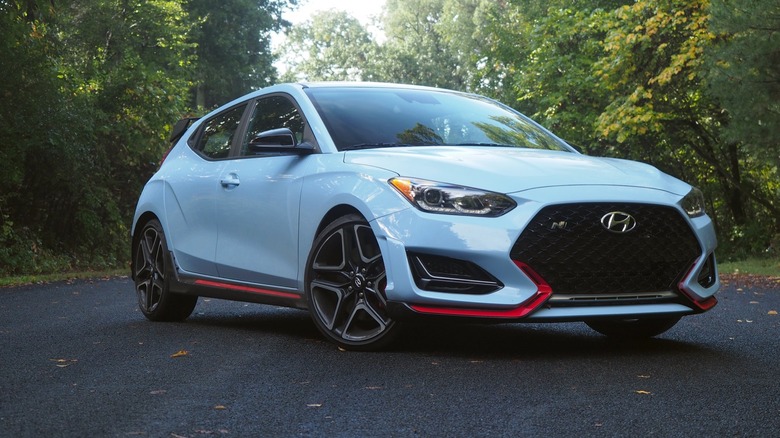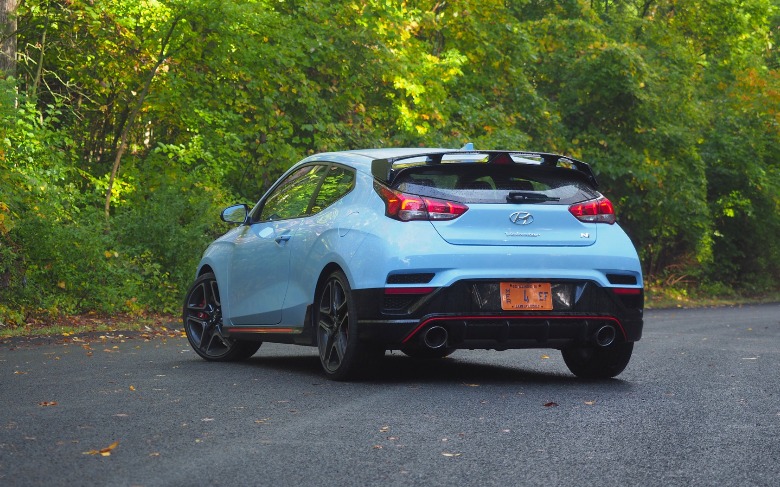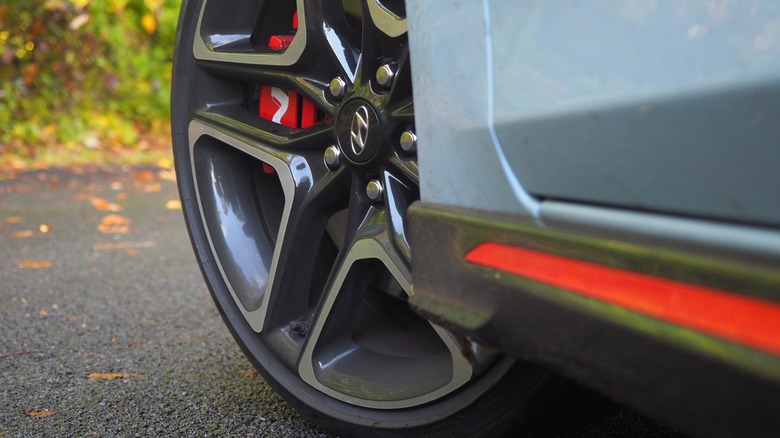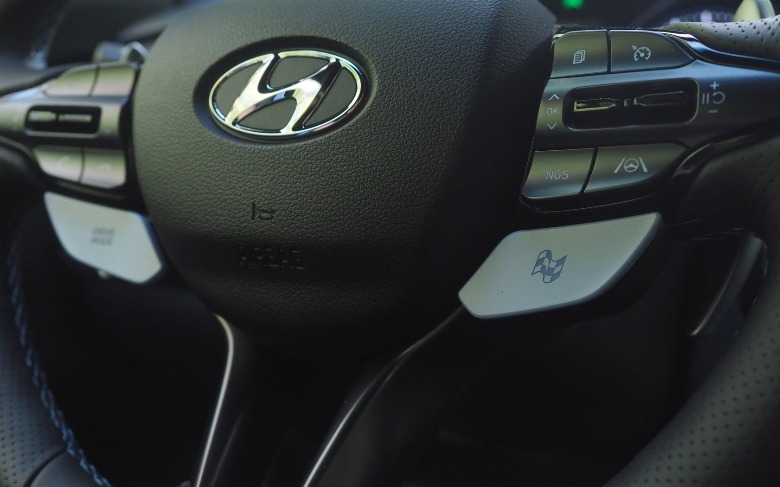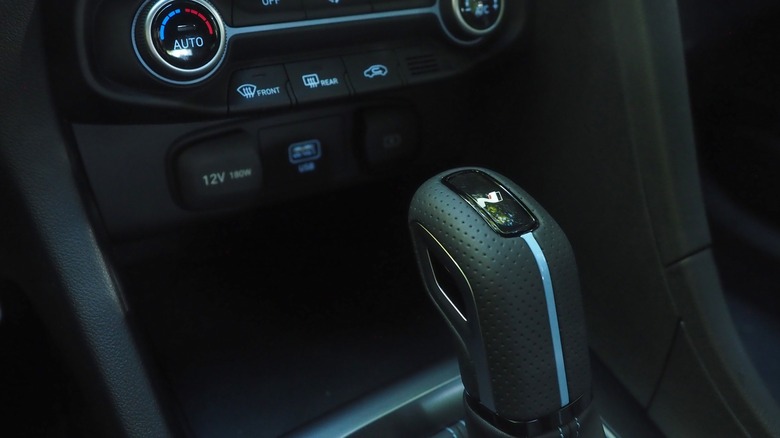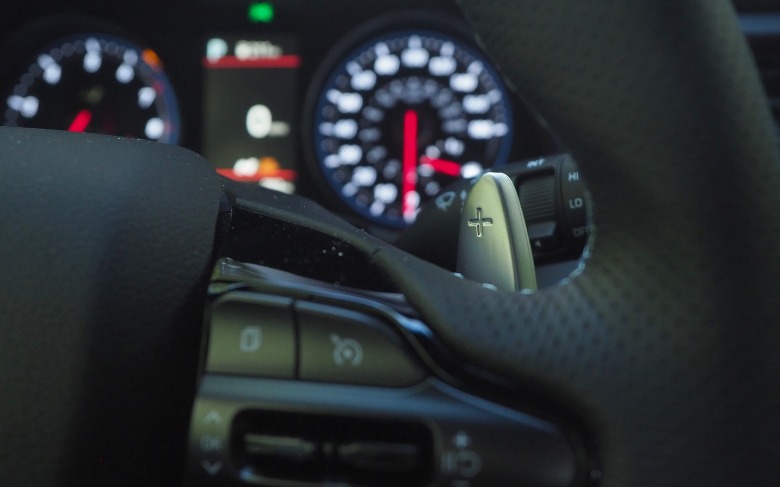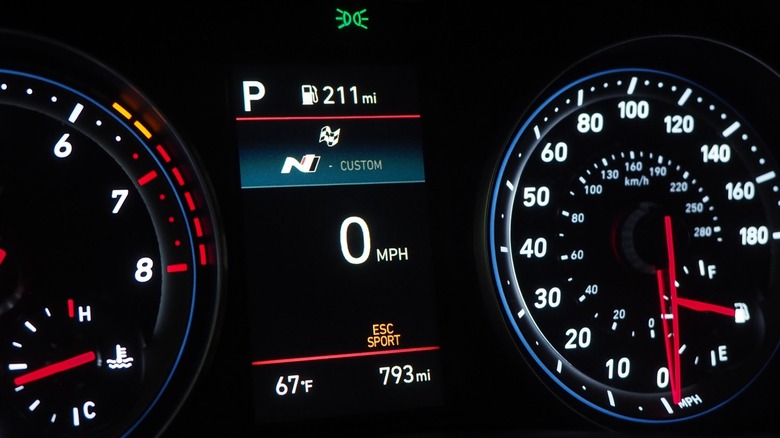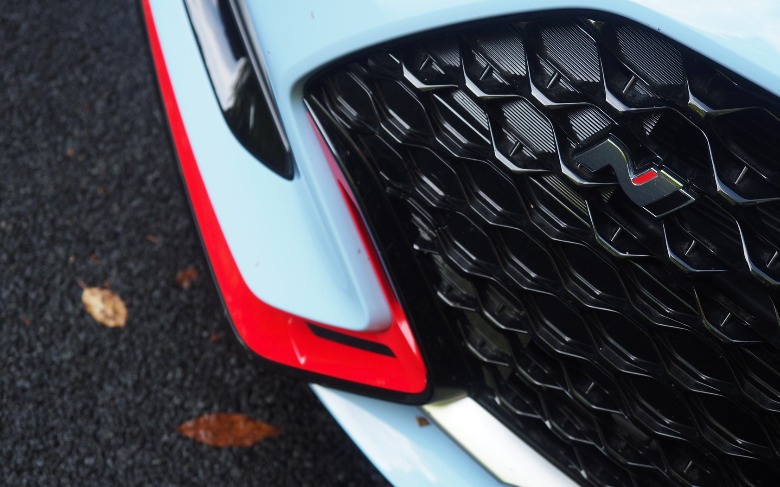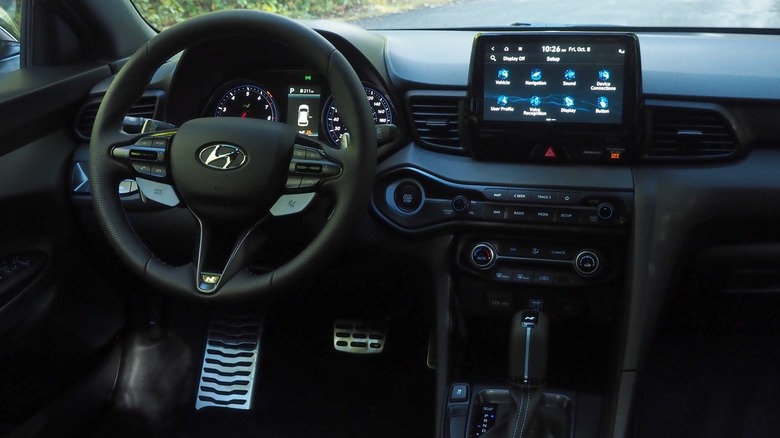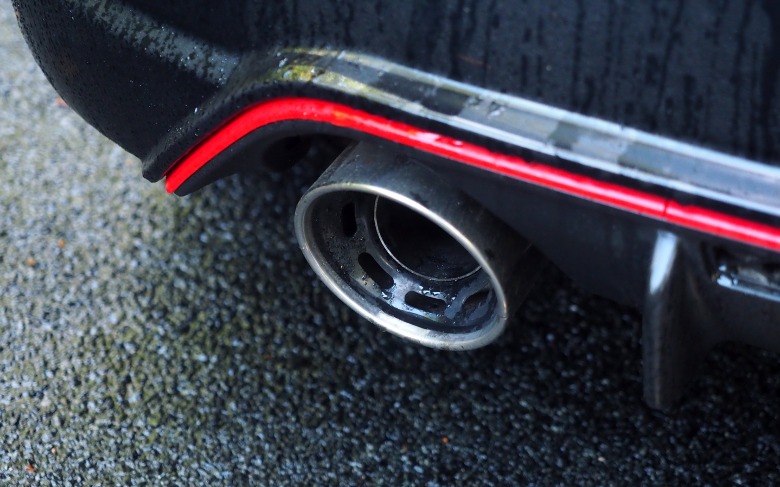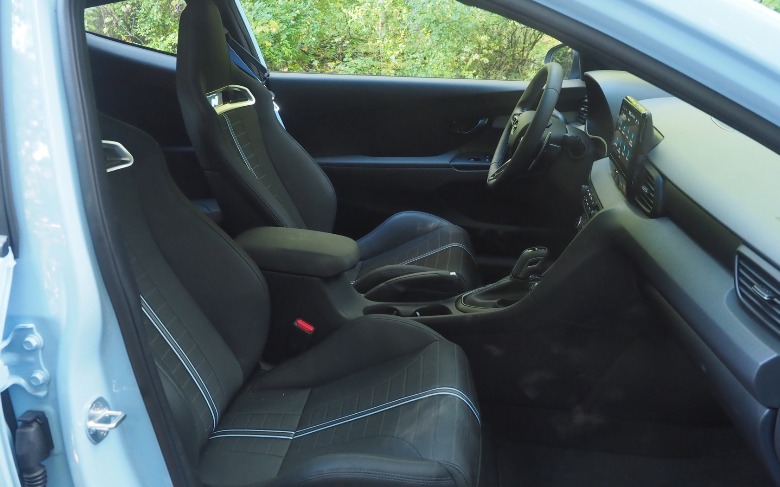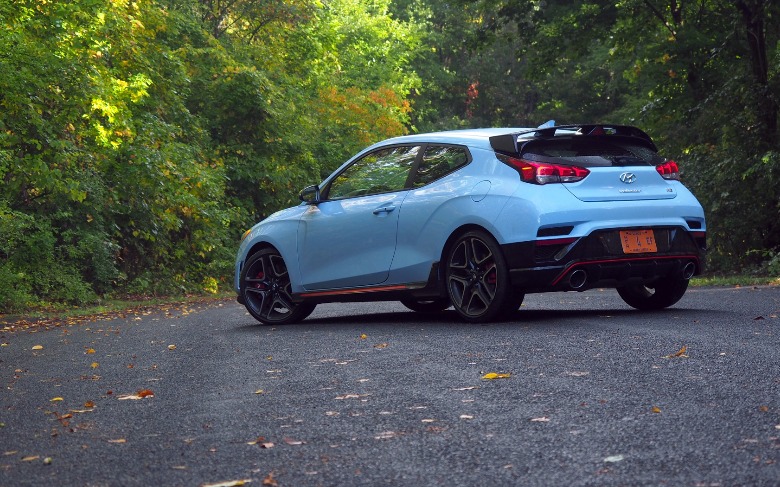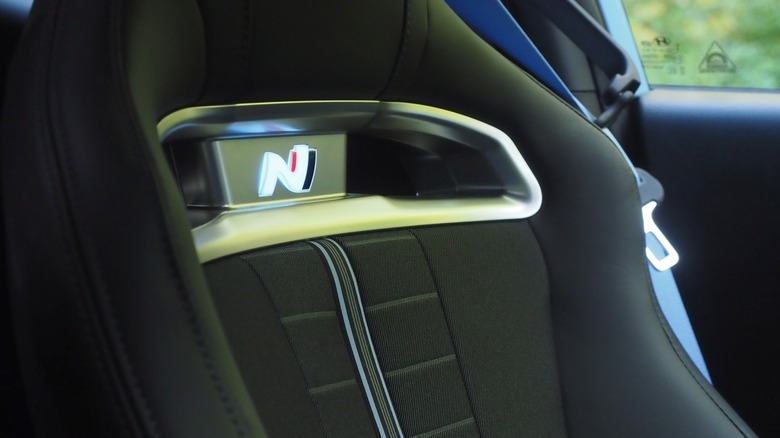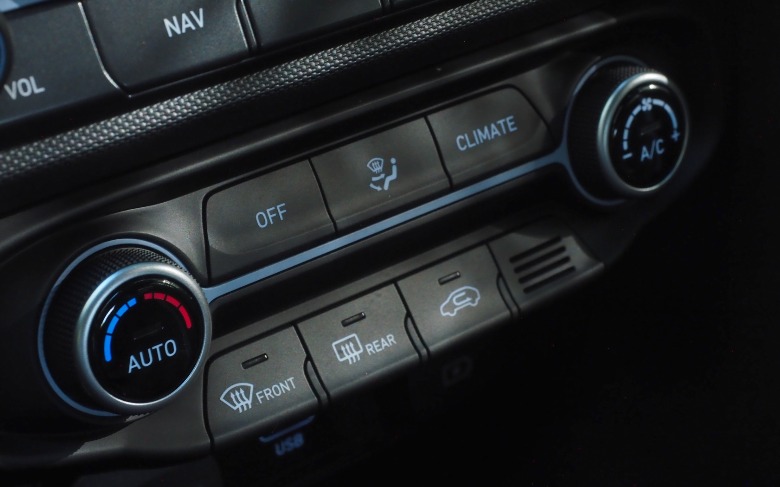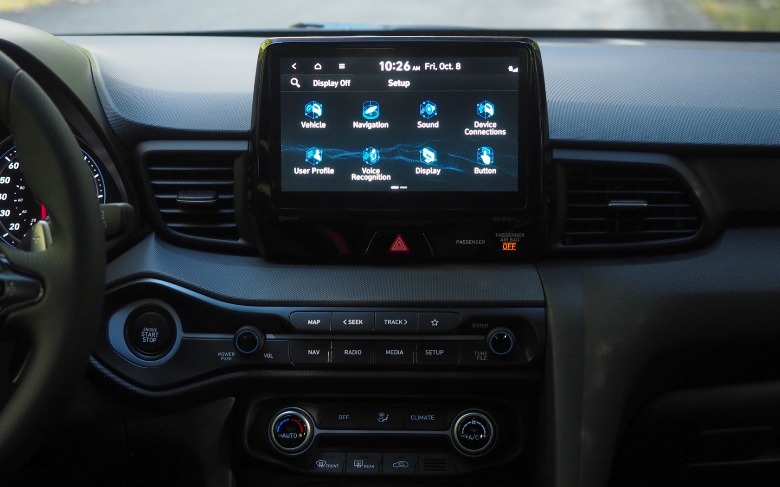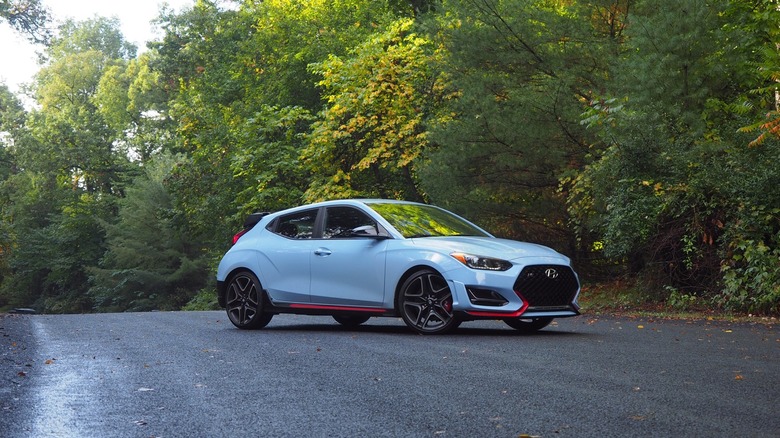2022 Hyundai Veloster N Review: DCT Doesn't Spoil The Fun
If the answer to "which driver's car?" is always "Miata," then maybe the answer to "which driver's car for when four seats are a must?" is the 2022 Hyundai Veloster N. The South Korean automaker may not have been an obvious candidate for producing the blueprint affordable hot-hatch, but by combining the kooky Veloster with an admirable focus on cheap thrills it has somehow managed to leave the Golf GTI feeling a bit, well, fuddy-duddy.
The shift to SUVs is an unavoidable one, and the 2022 Veloster N is the last of its nameplate in the US. Hyundai opted to put the less-fearsome variants out to pasture, and now this playful three-door – one door on the driver's side, two on the passenger's – is the only configuration you'll find. Pricing starts at $32,500 (plus $1,005 destination).
You want the manual, right?
There's a single engine option, a 2.0-liter turbo GDI which packs a healthy 275 horsepower and 260 lb-ft of torque. The former arrives at 6,000 rpm; the latter at just 1,450 rpm. It's front-wheel drive, with adaptive dampers as standard and an electronically-controlled limited-slip differential.
In a world where the stick shift seems to be on the endangered species list, the fact that Hyundai offers one on the Veloster N feels like a throwback and a treat. Indeed, the hot hatch comes with a six-speed manual transmission as standard, complete with "make you feel like a race car driver" rev-matching to really make the most of those three pedals. Our previous experience in the Veloster N confirmed it was most certainly the configuration you'd want.
Hyundai's cunning DCT
Then, Hyundai mixed things up. The stick was staying, don't worry about that, but there'd be an optional 8-speed, N-branded wet dual-clutch transmission. An automatic, yes, but a sporty automatic, one with paddle-shifters for those times you want to take over, but the ability to leave it to switch cogs itself when the route is more mundane.
Purists would still be forgiven for gasping in horror, but Hyundai has skirted a clever line here. Though there's undoubtedly convenience – and a broader audience for the Veloster N itself, given the number of people in the US who literally can't drive stick – it's not at the complete sacrifice of driving engagement. Credit "race-like manual shift logic" for that, in effect an automatic that's more likely to change gears like an eager human.
Ignore the skeptics
The end result is worth ignoring the skeptics for. Yes, rowing your own gears may leave you feeling more engaged in each moment, but Hyundai's DCT is whippet-fast and more than eager to keep you where the power is most plentiful. Unsurprisingly, since it's faster than a human gear change, it also helps trim the Veloster N's 0-60 mph time to just 4.8 seconds.
The $1,500 extra doesn't just nab you more flexibility, but a – short – bump in power, too. Courtesy of overboost, the DCT can actually crank out 278 lb-ft of torque from the engine. Hit the "N Grin Shift" button and not only do you get 20 seconds of extended torque but all the other drive mode settings cranked to the max, too. It's something Porsche offers on some of its cars, and it's a lot of fun when you're taking advantage of overtaking situations or just making the most of an impromptu entertaining stretch of road.
Press the N button, we dare you
Look, I love a well-tuned manual as much as the next person, but unlike with some cars – MX-5 Miata, I'm looking at you – opting for the DCT Veloster N doesn't feel like an admission of defeat. Hyundai's excellent drive logic gets the credit for that, encouraging a "just a few minutes more" sense of addiction behind the wheel.
Hyundai combines its punchy turbo inline-four and fancy 8-speed with N Corner Carving Differential with an N Power Sense Axle. Honestly, the name is silly, but the mechanics are clever, routing power to the side of the car where it's most impactful for grip and dynamics. You get the biggest sense of it when you stab the "N" button – complete with a checkered flag graphic – at which point the Veloster N throws everything to their maximum settings, including loading up on steering weight and encouraging the variable valve sport exhaust to bellow and snort with eager, giddy glee.
Press that button again, meanwhile, and you can summon your own, custom configuration. It's worth doing, actually, if you're going to try to use the Veloster N as the daily-driver the DCT makes more feasible. After all, though that concrete-slab default on the sports suspension may make sense through hairpin corners, it's less pleasant when you just want to make a grocery store run.
No, the punchy little Hyundai can't quite be dialed into everyday compliance like cars with full-on air suspension and adaptive dampers might. Nonetheless there's room still for making something more placid (and easier on your lower back) without losing everything that makes the Veloster N such fun along the way.
An interior that's practical not playful
As for that practicality, the cabin is a reasonable but dour place to sit. Splashes of color on the N-unique buttons and switches are nice to see, but everything else is dark, dark, dark. Black sport bucket seats, black dashboard, black buttons and switchgear. The illuminated "N" logos on the seats help – well, up until the point where you sit on them, and then your neck blocks the view – and the seatbelts are a contrast shade, but generally this is a cave-like experience.
Happily, while it may not be a delight on the eyes, for the most part it's all functionally successful. The seats are comfortable and supportive; the leather wrapped wheel is meaty; and there's a simplicity here which – though it may come from the Veloster's original no-frills positioning – is welcome when you're trying to focus on the road. The plastics aren't going to win awards, but they're creak-free.
An 8-inch touchscreen sits atop the dashboard, with standard Android Auto and Apple CarPlay. Its native interface won't wow you, but Hyundai – probably correctly – seems to assume that most Veloster N owners will be plugging their phone in anyway. Better is the safety package, with forward collision avoidance and assistance, blind spot warnings, lane following assistance, and lane keeping assistance all standard. You get Hyundai's solid 5 year/60,000 mile warranty, too, along with 3 years/36,000 miles of complimentary maintenance.
It's not the only area where the Veloster N shines in practicality. The rear seats – easier accessed with the dedicated door on the passenger side, though the driver's seat folds forward too – is adult-scale, while the trunk accommodates just shy of 20 cu-ft. Only a relatively high, narrow opening makes that tricky to take advantage of. For economy, the manual is actually rated better, with the DCT promising 20 mpg in the city, 27 mpg on the highway, and 22 mpg combined. If you want to get close, of course, you'll need to ease up with your right foot.
2022 Hyundai Veloster N Verdict
Personality. Really, there's nothing short of a Civic Type R which packs the sort of playful punch that the Veloster N manages, though Honda's hatch has been retired and we'll have to wait for the new model to arrive later in 2022. Assuming Honda's sticker stays much the same, though, the Hyundai keeps its budget appeal: the outgoing Type R started at around $38k, whereas this DCT-equipped Veloster N is $35,005 including destination.
That, it's worth noting, is less than the average cost of a new car in the US at the moment. It's in the same ballpark as Mazda's mildly-practical MX-5 Miata RF, which has a trick folding hardtop but half the seats. Having used both as a daily-driver, I think I'd lean toward the Hyundai long-term.
"Future classic" gets bandied around in car circles a lot, but I think the Veloster N earns the title. While the DCT gearbox may upset some, the reality is that it lends the feisty hatch just that little bit of everyday usability to temper the sporting compromise of its manual sibling. The best news is that the choice between the two is still yours: just make sure you get in soon, before Hyundai changes its mind.
